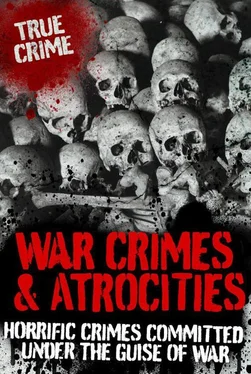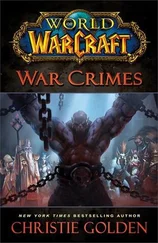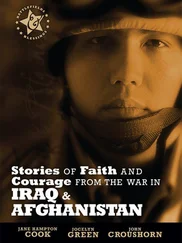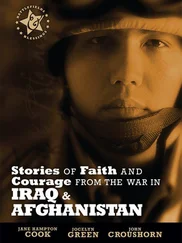After the war, Papon moved to Paris and went on to become a successful civil servant with many top appointments, including Chief of the Paris Police and Budget Minister for President Valéry Giscard D’Estaing. He was even decorated by General Charles de Gaulle and kept a position in the cabinet for 30 years before his past caught up with him.
However, Papon’s history was eventually brought to light by the radical newspaper Le Canard Enchaîné, and on 2 April 1998, Papon faced the longest trial in all of French history. He was charged and convicted of ‘crimes against humanity’. He was given a ten-year prison sentence, but he was released four years later because of health problems.
The decision to release Papon was met with angry outbursts by the relatives of those who had died. Human rights activitists, who had fought to bring him to justice, said that victims of Nazism felt ‘insulted’ by this decision.
1938–45

Czechoslovakia (now The Czech Republic and Slovakia) was the site of some of the worst war crimes and atrocities of World War II. As in other European countries, such as Belgium, France, The Netherlands and Poland, once the Nazis had assumed control, the Jewish communities living there were mercilessly persecuted, along with other minority groups. The population figures for Czechoslovakia, as elsewhere, tell their own tragic story: at the beginning of the war, there were 350,000 Jews living in the country; by the end, only 20,000 remained.
The savage treatment of these peaceful, industrious communities who had contributed so much to the life of the nation met with little resistance from the majority of Czech people, where a strong current of anti-Semitism was apparent. However, there were also brave Czechs who fought to protect their compatriots, and who showed great courage in doing so, for the Nazis wreaked a hideous revenge on anyone found helping the Jews, or defying the regime in any way. One of the most notorious instances of Nazi brutality towards the civilian population of Czechoslovakia was at Lidice, a small town whose inhabitants were exterminated, at the specific request of the Führer himself, in order to set an example to those who even considered resisting the Nazi reign of terror.
DEMOLITION OF A STATE
In 1938, Hitler signed the Munich Agreement with Britain, France and Italy. Under the terms of the agreement, an area of western Czechoslovakia known as the Sudetenland was to be taken over by the Germans. Although there was a substantial German-speaking population in this region, who were mostly anti-Semitic and complained that they were oppressed by the Czech majority, there was no legal basis whatsoever for this seizure of power. The other European nations simply allowed Hitler to walk in to Czechoslovakia, hoping that signing the agreement might appease him and gratify his need for territorial expansion. They could not have been more wrong.
When the Nazis arrived in Czechoslovakia, they met with little resistance. Within months, the entire autonomous structure of the country, including its armed forces and its democratic political apparatus, had been destroyed. First, the Czech army was demolished, and its arsenal of weapons taken over for use by German forces. Next, Hitler encouraged Slovakian fascists to declare independence for Slovakia, creating a state that was entirely under the power of the Third Reich. Subsequently, the Germans invaded the Czech provinces of Bohemia and Moravia, declaring them to be a German protectorate, and appointing one of their leading figures, Konstantin von Neurath, as the ‘Reichsprotektor’ of the new territory.
THE HANGMAN
Von Neurath immediately set to work, abolishing political parties and trade unions, and arresting students who protested against the situation. However, despite his brutal suppression of all forms of political opposition to the fascist regime, Hitler did not consider him fanatical enough, and in 1941 replaced him with one of the most feared figures of the Third Reich, Reinhard Heydrich. Von Neurath remained a nominal figurehead until 1943, but from that time, the real power lay with Heydrich.
Known as ‘The Blond Beast’ and ‘The Hangman’, Heydrich was soon to receive another nickname, as ‘The Butcher of Prague’. As the head of the Reich Security Services, which included the Gestapo, he was also one of the chief architects of the Holocaust. It was Heydrich who had organized and chaired the infamous Wannsee Conference of 1942, laying out his plans for the extermination of the entire Jewish population of Europe: the ‘Final Solution’, as it became known. He was a close friend and confidant of the Führer, who much admired his skill and prowess as a sportsman, and considered him to be the prototype Aryan (even though it was rumoured that, in fact, Heydrich had a Jewish grandparent). According to some sources, Hitler considered Heydrich to be a possible candidate for leader of the Third Reich in the future.
THE FINAL SOLUTION
In his new position as head of government in Czechoslovakia, Heydrich lost no time in putting his nightmare plan into action. Already, von Neurath had announced a long list of anti-Jewish laws, designed to make the Jewish communities as powerless as possible, both in terms of business and social life. There had also been deportations of Czech Jews to concentration camps in Poland. However, under Heydrich the campaign was now stepped up, and thousands more Jews were arrested and sent to concentration camps. Most of them met their end in Auschwitz, either being gassed to death, or perishing from malnutrition and disease. By the end of the war in 1945, around 75 per cent of the Jewish population had been murdered in the death camps.
As in other European countries, the Nazi regime mined a deep seam of anti-Semitism running through Czech culture, and there were many who enthusiastically collaborated with the Final Solution programme instigated by Heydrich. However, there were also brave souls who were prepared to risk their lives to oppose the Nazis, and who eventually succeeded in ridding Czechoslovakia of its tyrannical ruler – but with devastating consequences.
OPERATION ANTHROPOID
Operation Anthropoid was a daring plan to assassinate Heydrich, masterminded by the British spy unit, the Special Operations Executive. Under the plan, several soldiers from Czechoslovakia’s erstwhile army, including Jozef Gabcik and Jan Kubis, were to covertly enter the country to assassinate the Nazi leader. On the night 28 December, 1941, the soldiers were parachuted in by RAF planes. Once on the ground, they made their way to Prague, where they contacted anti-Nazi resistance groups and prepared to make their attack.
Heydrich was known for his habit of riding around Prague in an open-topped car. He was supremely arrogant and appeared to believe that he was invincible, especially since his henchmen had brutally suppressed all forms of opposition to his regime. However, on 27 May, 1942, his confidence in his total control of the country was proved wrong.
That day Heydrich set out to commute from his home to Prague Castle, the Nazi headquarters. Ever careless of security, he did not wait for a police escort that day, but ordered his driver to take him in to work in his Mercedes-Benz. As the car travelled along its accustomed route, Kubis and Gabcik stood at a bus stop outside a hospital. When the car passed, Gabcik stepped out and opened fire with a Sten gun, but it jammed. Heydrich promptly told his driver to stop, and stood up in the car to shoot Gabcik. At this point, Kubis intervened, throwing an anti-tank grenade at the car. The grenade damaged the right fender of the car, but did not penetrate into it. Nevertheless, Heydrich was badly injured as pieces of shrapnel and upholstery fibres lodged in his body. Undeterred, Heydrich continued to shoot at his assailant, but eventually collapsed, whereupon his driver, a man named Klein, ran out in pursuit of Gabcik. Klein was shot dead during the chase.
Читать дальше













